We have recently started a series of webinars looking at all things wild flower. Our second webinar was on the subject of wild flower maintenance and we thought it would be helpful to follow this up with a blog on the subject as June is the best time of the year to start thinking about a cutting regime for your wild flower areas.
Our recent webinar covered a number of ideas for maintaining wildflowers and included the latest results from our Research and Development site.
For brevity’s sake, this blog will follow the running order of the webinar. For more detail, follow the link supplied at the end of the blog and listen to the full webinar. If you have any questions, please do not hesitate to call us for more information.
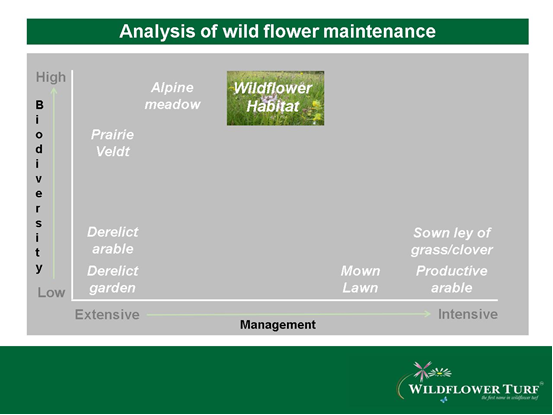
The above was work done by Professor Steve Head of the Wildlife Gardening Forum. There are not many habitats in this country where low maintenance and high levels of biodiversity go hand in hand. Prairie, Veldt and Alpine meadows are low maintenance and high biodiversity, but we can’t grow these in the UK as our temperate climate won’t allow it. However a wild flower meadow is our best shot at low maintenance with the associated reduced costs, and the ability to achieve high levels of biodiversity very easily and in a very short time scale.
From our Research & Development initiatives to date, we have trialled various different cutting regimes that you could employ in wild flower areas and the results you may experience.
Zero cut
This is not a long term option for wildflower meadows as in time they will get taken over by shrubs and then trees and then the meadow becomes a wood. As we monitor our zero cut plot we will look at the number of wild flower species that persist. With no cut and remove, we would expect to see a drop off in the number of plant species in the plot. The other reason to avoid a zero cut regime is the aesthetics or look of the plot. For around 6 months of the year the meadow will look very scruffy as can be seen below:
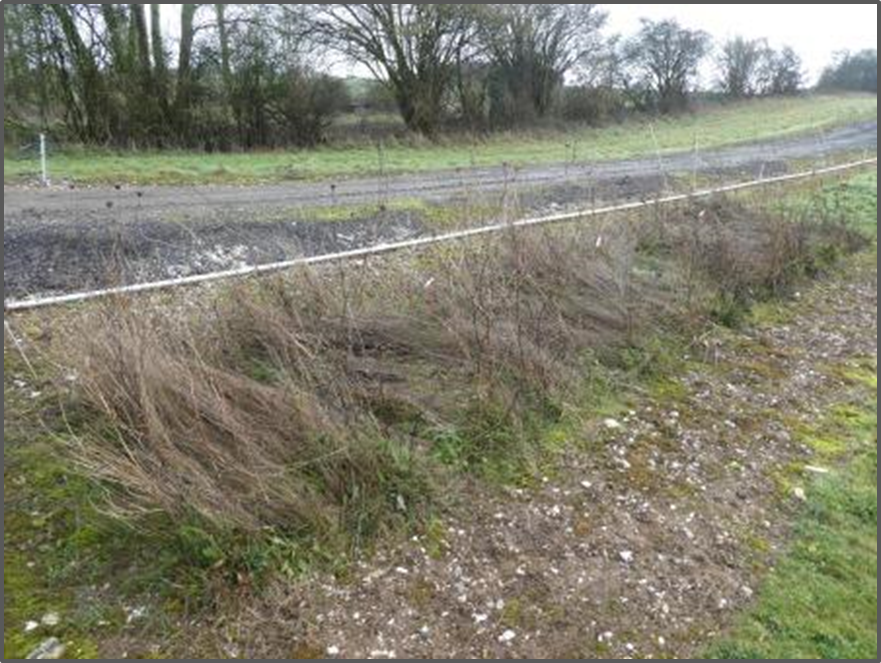
One Cut
One autumn cut a year is the cutting regime used by many. On our R&D site we did this (no image) on the 19th September 2018. It is a low cost option and is good for wild life as there is habitat to provide food and shelter through the spring, summer and early autumn when animals are most active. Cosmetically there can be a scruffy look from August to the cutting date although this does depend on how fertile the soil is as a lot of growth gives a scruffier, late-summer look. So one cut regimes do suit meadows where soil fertility is poor. Aim to complete the cut reasonably early in the autumn. Leaving it too late means that the meadow has no time to regenerate before it becomes completely dormant in the winter and this will result in a slow start the following spring as there is little plant leaf area to promote early spring growth.
If there is one essential requirement for a meadow this is it; one autumn cut.
Two Cut
A two cut regime is well worth considering for a number of reasons. This is most useful where soil fertility is high. Cutting in early June and mid-September ensures that both cuts take off the maximum amount of green material and this is a way to ensure the removal of the most amount of nutrients to help reduce overall soil fertility.
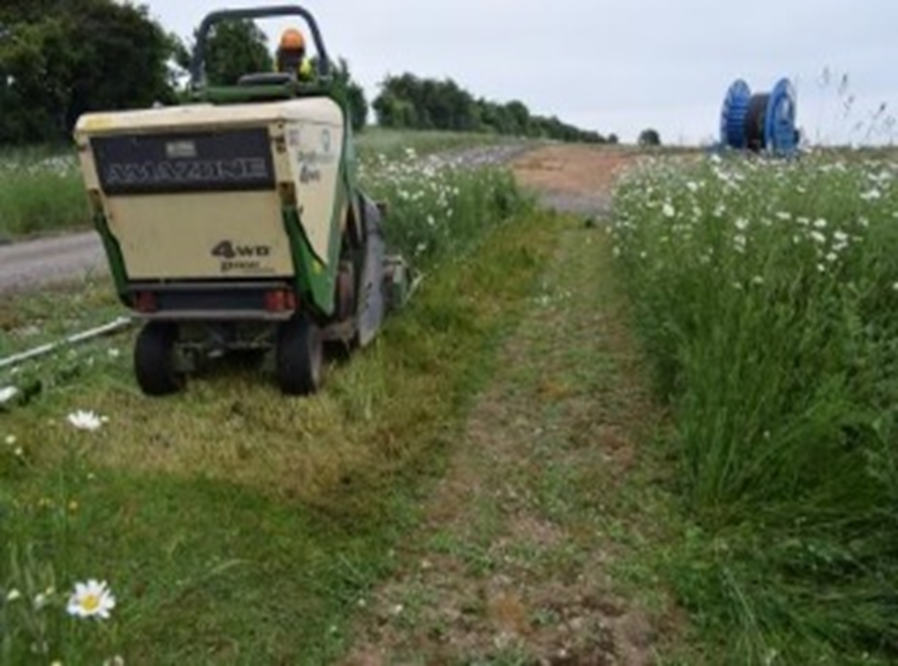
Do this for a few years and you can significantly reduce soil nutrition which will ensure a lovely open meadow that maintains species diversity and maximises the colour and variety of the meadow. The Ashley Manor case study in the webinar gives an example of this technique and the result can be seen below. In this case, the two cut regime was stopped after about 5 years. By then, soil fertility was reduced to a level that required only one cut and remove in the autumn and still gave a biodiverse and attractive meadow.
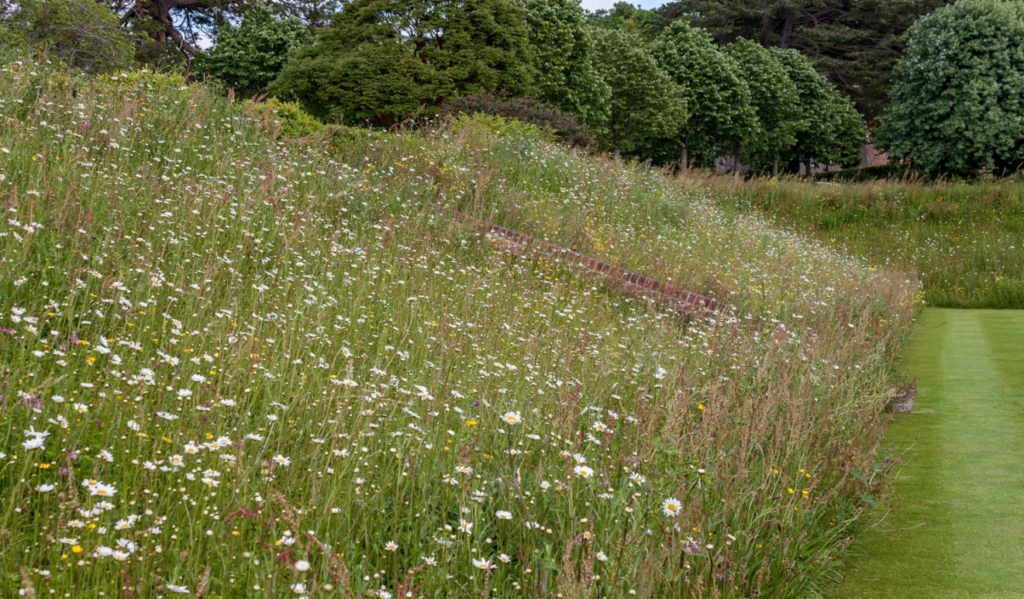
The two cut method can help with keeping the meadow very tidy and aesthetically pleasing, and extends the time the meadow is in flower. Essentially you get the early spring flowers and, as they start to senesce, the June cut removes that first flush of plant material. This then regrows quickly to give some flowers for the summer and early autumn.
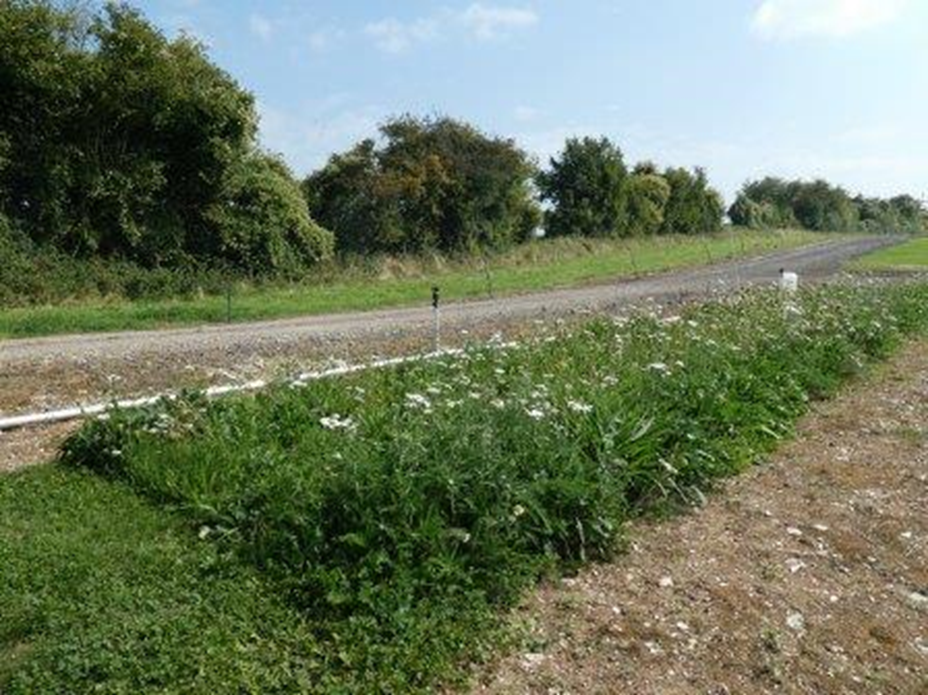
One tip after the June cut is to make sure that after cutting, the area is then well watered if the soil is dry. This encourages quicker re-growth and so the area is quick to flower again.
Type of Machinery for Maintenance
There is always interest in what methods and machines are best for cutting a meadow. The answer is whatever is easy and quick as this will ensure it gets done! So it is generally worth avoiding scythes unless you have been trained and are on a health kick! A strimmer and Allen Scythes are good for small and medium areas, but the arisings will need raking off by hand. Machines such as the Profihopper and Grillo will cut and remove in one go and are very easy to use. They make light work of the maintenance, but investment is required as they are not cheap. Tractor powered machines such as cut and collection machines or balers work well for large meadows.
Other Considerations
The design of a meadow is the starting point for making maintenance easy and achievable. There are many things to think about when designing a meadow but don’t overlook the ability of the design to make its future maintenance easier. Paths and margins around the outside of the meadow will allow easy access for cutting and then the removal of cuttings.
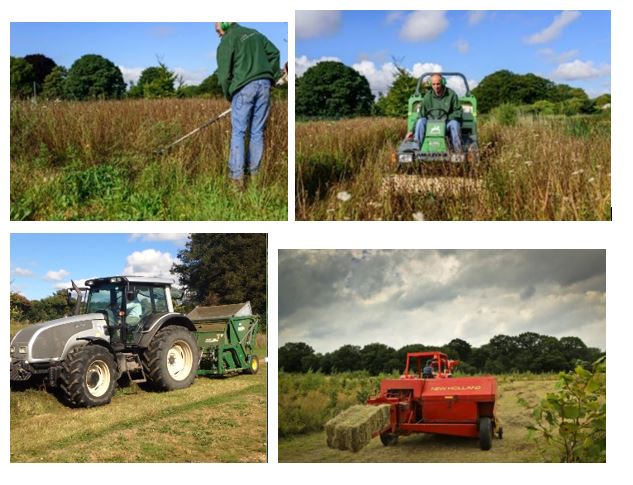
There is likely to be some need for spot treating weeds. This can be done by digging them out or spot spraying them with glyphosate. With a well-established meadow, this is relatively easily done. Where seeding wild flowers into soil with a high weed burden, identifying and removing the weeds can lead to a huge amount of work.
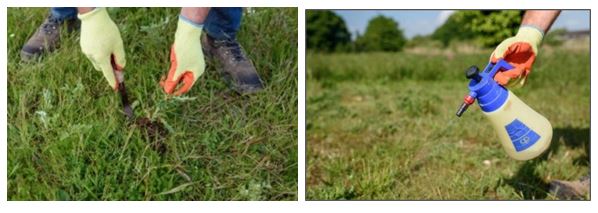
Leaf residue can kill a meadow quickly if left to smother wildflowers over a winter. This kill out is often attributed to shade but it is as, or more likely, a result of leaving a thick layer of leaves in the autumn. They will sit over the flowers starving them of light and also reintroducing nutrients as they eventually break down. Cut the meadow back before leaf drop and removing the leaves is easy, especially if you have a collector mower as this will clear the leaves in no time and the mulch makes great compost.
Another tip is to take care when fertilising the lawn. It is possible to have a top quality lawn immediately adjacent to a wildflower meadow (and the contrast is a lovely feature of a garden meadow), but when applying fertiliser treat the two areas separately – avoid fertiliser overlapping onto the wildflower area at all costs.
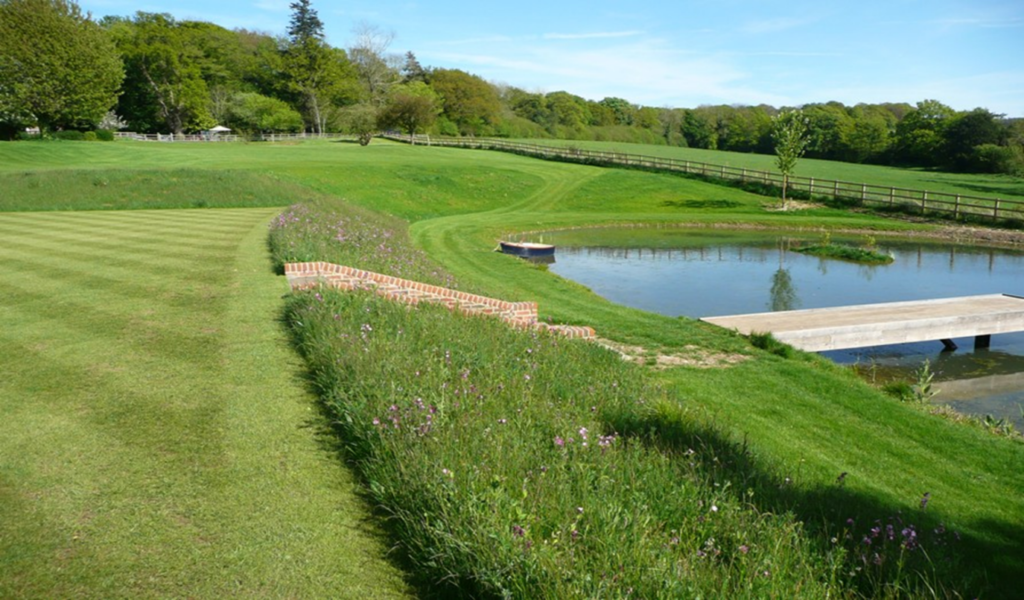
In conclusion, there is nothing too prescriptive about timings and methods and a well-established meadow is very forgiving and robust. All of these maintenance ideas do rely on a really well-established wild flower space as the starting point and we can help to achieve this with our various wild flower products.
If you would like more detail on any of the above, please take a listen to our recent webinar on the subject:
[vimeo]https://vimeo.com/340380767[/vimeo]
Or give us a call on 01256 771222 to talk it through.